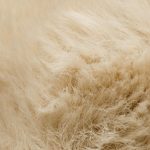When you think about the clothes you wear every day, you probably don't consider the science behind them. Nanotechnology is changing that by enhancing fabrics in ways you might not expect. Imagine shirts that never stain, pants that repel water, and jackets that regulate temperature. These advancements aren't just futuristic concepts; they're happening now thanks to nanomaterials like nanoparticle coatings and carbon nanotubes. However, with these innovations come questions about safety, environmental impact, and regulatory challenges. So, what's the real deal with nanotech fabrics and how will they affect your wardrobe?
Table of Contents
Key Takeaways
- Nanotechnology enhances fabric durability, making them more resistant to UV radiation, chemicals, and wear and tear.
- Breathability and moisture-wicking are improved, providing greater comfort and adaptability to temperature changes.
- Nanoparticle coatings and carbon nanotubes offer water-repellency, UV protection, and increased fabric strength.
- Silver nanoparticles embedded in fabrics reduce odors and infections, promoting hygiene.
- Future trends include sustainable fashion, smart textiles, self-cleaning fabrics, and enhanced performance capabilities.
Understanding Nanotechnology
Nanotechnology, the science of manipulating matter at the atomic scale, is revolutionizing various industries, including textiles. To truly grasp its impact, you need to understand nanotech basics and key concepts.
At its core, nanotechnology involves working with particles that are between 1 and 100 nanometers in size. For perspective, a single nanometer is one-billionth of a meter. This minuscule scale enables scientists to alter the properties of materials in ways that would be impossible at larger scales.
Key concepts in nanotechnology include quantum effects, surface area-to-volume ratio, and self-assembly. Quantum effects become significant at the nanoscale, meaning that materials can exhibit unique electrical, optical, and magnetic properties. Understanding these effects is essential for mastering nanotechnology.
The surface area-to-volume ratio also dramatically increases at the nanoscale, leading to enhanced reactivity. This makes nanomaterials ideal for applications requiring high sensitivity and precision.
Self-assembly refers to the ability of molecules to autonomously organize into structured patterns. This is a cornerstone of nanotechnology, allowing for the creation of complex structures with minimal human intervention.
How Nanotechnology Enhances Fabrics
When you think about your favorite clothes, nanotechnology makes them even better.
It boosts durability, keeps you comfortable, and offers advanced stain resistance.
Let's explore how these enhancements can transform your wardrobe.
Improved Durability
With nanotechnology, fabrics become more resistant to wear and tear, greatly extending their lifespan. Imagine your favorite jacket or pair of jeans lasting years longer without fading or fraying. This isn't science fiction—it's the power of nanotechnology.
By embedding nanoparticles into the fabric fibers, manufacturers achieve remarkable strength enhancement. These nanoparticles create a protective shield around each fiber, making the fabric considerably more robust against physical stresses.
When you invest in nanotechnology-enhanced fabrics, you're opting for increased longevity. This means fewer replacements and more savings over time. The advanced materials can withstand rigorous use, whether it's frequent washing, exposure to elements, or daily wear. Your clothing, sports gear, or even upholstery stays in excellent condition much longer than conventional fabrics.
Moreover, nanotechnology doesn't just stop at physical durability. It also enhances the fabric's resistance to external factors like UV radiation and chemicals. This added layer of protection guarantees your garments maintain their integrity and appearance, even under harsh conditions.
Enhanced Comfort
Imagine slipping into clothing that adapts to your body's temperature and moisture levels, providing unparalleled comfort throughout the day. Thanks to nanotechnology, this isn't just a dream—it's a reality. Nanotechnology enhances fabric properties, making them more responsive to your needs.
- Breathability and Insulation: Nanofibers can be engineered to improve breathability, ensuring you stay cool when it's hot and warm when it's cold. This dual functionality offers superior insulation without adding bulk, making your garments versatile across various climates.
- Moisture Wicking: Advanced fabrics now incorporate nanomaterials designed to wick moisture away from your skin. This keeps you dry and comfortable, whether you're working out or simply going about your daily activities.
- Flexibility: Nanotechnology allows fabrics to maintain their flexibility while providing additional benefits like strength and durability. You'll enjoy a full range of motion without sacrificing comfort or performance.
- Adaptive Comfort: Imagine fabrics that adjust in real-time to your body's needs. Nanotechnology enables this by embedding smart materials that respond to temperature and humidity changes, ensuring ideal comfort throughout the day.
Advanced Stain Resistance
Nanotechnology enhances comfort and transforms stain resistance in fabrics, keeping your clothes looking fresh and clean for longer. Imagine a world where spills and stains are no longer a cause for concern. With nano coating technology, this is now a reality. These microscopic coatings create a barrier on the fabric surface, preventing liquids and dirt from penetrating the fibers.
The resistance mechanisms employed by these nano coatings are fascinating. They work by creating a hydrophobic layer that repels water-based substances, making them bead up and roll off the fabric. This means that accidental coffee spills or rainy weather won't ruin your favorite outfit. Additionally, these coatings also offer oleophobic properties, repelling oil-based substances like salad dressing or grease.
You'll appreciate how these advanced stain-resistant fabrics maintain their appearance and functionality over time. The nano coatings are durable, often lasting through numerous washes without degrading. Besides, they don't alter the fabric's texture or breathability, ensuring you stay comfortable while enjoying enhanced protection.
Types of Nanomaterials Used
Fabrics today integrate a variety of nanomaterials, such as nanoparticles, nanofibers, and nanotubes, to enhance their performance and functionality. By leveraging these advanced materials, you can achieve textiles that aren't only more durable but also possess unique properties.
Let's delve into some of the key types of nanomaterials used in fabrics:
- Nanoparticle Coatings: These tiny particles are applied to the surface of fabrics to impart properties like water-repellency, UV protection, and anti-microbial resistance. They create a barrier that can defend against stains and bacteria, making your clothes cleaner and longer-lasting.
- Carbon Nanotubes: Known for their exceptional strength and flexibility, carbon nanotubes are integrated into fabrics to make them more resilient. These minuscule cylindrical structures can enhance electrical conductivity and thermal resistance, opening up new possibilities for smart textiles.
- Nanofibers: Fabrics incorporating nanofibers benefit from increased surface area and porosity. This results in improved breathability and filtration capabilities, which are essential for applications like sportswear and medical textiles.
- Silver Nanoparticles: Widely used for their anti-bacterial properties, silver nanoparticles can be embedded into fabrics to reduce odor and infections, providing a hygienic solution for everyday wear.
Applications in Everyday Wear
Countless everyday garments now incorporate nanotechnology, providing enhanced features like stain resistance, moisture-wicking, and odor control to improve your daily wear experience. Imagine your favorite shirt repelling red wine or your gym clothes staying fresh longer. These smart textiles are revolutionizing your wardrobe.
Health benefits play a significant role in this innovation. Anti-microbial fabrics reduce bacteria, ensuring fewer skin irritations and infections. This is a leap forward in sustainable fashion, as these textiles extend the life of garments, reducing the need for frequent replacements.
Innovative designs also harness nanotechnology to create adaptive clothing. These garments can adjust to temperature changes, keeping you comfortable in various conditions. Picture a jacket that warms you in the cold and cools you in the heat—it's not just fantasy anymore.
Here's a quick look at how nanotechnology is applied in everyday wear:
| Feature | Benefit | Example |
|---|---|---|
| Stain Resistance | Keeps clothes clean | Dress shirts, pants |
| Moisture-Wicking | Enhances comfort | Athletic wear |
| Odor Control | Reduces smell | Gym clothes |
| Anti-Microbial | Health benefits | Underwear, socks |
| Temperature Adaptive | Comfort in all weathers | Jackets, activewear |
Benefits of Nano-Enhanced Textiles
Imagine wearing clothes that not only look good but also offer enhanced protection and comfort. Nano-enhanced textiles bring a new era of fashion innovation that goes beyond aesthetics.
Here are some key benefits you'll appreciate:
- Improved Durability: Nano-enhanced fabrics are designed to withstand wear and tear, making your garments last longer. This durability translates to fewer replacements and contributes to sustainability benefits by reducing waste.
- Enhanced Comfort: These textiles can be engineered to regulate temperature, wick away moisture, and repel stains. You'll stay comfortable and fresh all day, whether you're in a high-stress meeting or on a long hike.
- Health and Safety Features: Imagine a shirt that can protect you from harmful UV rays or a jacket that resists bacterial growth. Nano-enhanced textiles incorporate these safety features, adding an extra layer of protection to your everyday wear.
- Eco-Friendly Innovations: Sustainability benefits don't stop at durability. Many nano-enhanced textiles are designed with eco-friendly materials and processes, reducing environmental impact and promoting responsible fashion innovation.
Challenges and Limitations
While nano-boosted fabrics offer numerous advantages, they also come with their own set of challenges and limitations that can't be ignored. One major hurdle is regulatory compliance. As these innovative textiles enter the market, navigating the maze of international regulations can be overwhelming. You need to guarantee that your products meet strict safety standards to avoid legal repercussions and establish consumer trust.
Safety concerns are another vital issue. Nanoparticles, while enhancing fabric properties, may pose risks to human health. Prolonged exposure during manufacturing or wear could lead to unforeseen health problems. Stringent testing and transparent safety protocols are essential to mitigate these risks.
Environmental impact and sustainability issues also loom large. The production of nano-boosted textiles often involves processes that aren't environmentally friendly. Chemical treatments and nanoparticle synthesis can result in harmful byproducts. Additionally, the disposal of these fabrics raises questions about long-term sustainability. They don't always break down easily, contributing to environmental pollution.
As you dive into the world of nanotechnology in fabrics, it's essential to balance innovation with responsibility. Addressing these challenges head-on will guarantee that the benefits of nanotechnology can be enjoyed without compromising safety or environmental integrity.
Future Trends in Nanotech Fabrics
Looking ahead, nanotechnology in fabrics holds the potential for exciting advancements that could transform the textile industry. You can expect innovations that not only improve your wardrobe but also align with eco-friendly principles and cutting-edge technology. Here are some key trends to watch:
- Sustainable Fashion: Nanotech fabrics are poised to make sustainable fashion more attainable. By utilizing nanoparticles, manufacturers can create materials that are more durable and require fewer resources, helping to reduce waste and environmental impact.
- Smart Textiles: Envision clothing that can monitor your health or adapt to temperature changes. Smart textiles equipped with nanosensors can provide real-time data on various physiological parameters, making your garments not just fashionable but also practical.
- Self-cleaning Fabrics: No more frequent laundry days! Nanotechnology can produce fabrics that repel dirt and bacteria, reducing the need for washing and thereby conserving water and energy.
- Enhanced Performance: From moisture-wicking capabilities to UV protection, nanotech fabrics can greatly improve the performance of your athletic wear and outdoor gear, offering comfort and protection in various conditions.
Frequently Asked Questions
Are Nano-Enhanced Fabrics Safe for People With Sensitive Skin?
If you've got sensitive skin, nano-enhanced fabrics might cause skin irritation or allergies. Always follow dermatologist recommendations and take precautions. Consult your dermatologist to verify that these fabrics are safe for your specific skin type.
How Should Nano-Enhanced Fabrics Be Washed and Cared For?
'An ounce of prevention is worth a pound of cure. For nano-enhanced fabrics, always use gentle cycles and special detergents. By taking these measures, you'll guarantee the longevity and functionality of your high-tech garments.'
Do Nano-Enhanced Textiles Have an Impact on the Environment?
Yes, nano-enhanced textiles do have environmental implications. You should consider their sustainability and ecological footprint. Long term effects might include nanoparticle release into water systems, impacting ecosystems. Always weigh these factors in your purchasing decisions.
Can Nano-Enhanced Fabrics Be Recycled or Repurposed?
Imagine breathing new life into your fabrics. Yes, nano-enhanced fabrics can be recycled or repurposed. Recycling options and repurposing possibilities abound, allowing you to master sustainable practices without compromising on innovation and functionality.
How Much More Expensive Are Nano-Enhanced Fabrics Compared to Traditional Fabrics?
You're wondering about the cost comparison between nano-enhanced fabrics and traditional ones. Nano-enhanced fabrics can be considerably pricier due to the complex production process, often costing 20-30% more depending on the specific enhancements.
- Me+Em Cropped Bouclé Jacket: A Chic and Modern Wardrobe Staple - July 3, 2025
- Me+Em Bouclé: A Review of the Jacket, Skirt, and Dress Collection - July 3, 2025
- Is Bouclé Yarn Warm? The Perfect Choice for Cozy Knits - July 3, 2025







